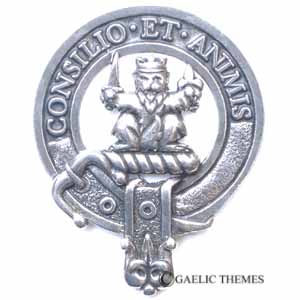Search
Maitland
Select
- Design: Standard
- Clan Motto: Consilio et animis (By wisdom and courage)
- Notes: Crest: A lion sejant affrontee Gules, ducally crowned Proper, in his dexter paw a sword Proper hilted and pommelled Or, in his sinister a fleur de lis Azure. The Maitlands are most probably descended from a Norman who accompanied William the Conqueror and then settled in Northumberland. The name may be seen in many early charters as Matulant, Mautalant or Maltalant. The meaning of the name is debated but one likely translation is ‘Quasi mutilatus in bello’ - “as if mutilated in war”. Sir Richard Matulant became a powerful baron in the Borders region by acquiring the lands of Thirlstane, Blyth and hedderwick. Sir William Mautlant de Thirlstane was at Bannockburn with Robert the Bruce, but died just one year later. His son, Sir Robert Maitland, inherited the family lands and gained a grant for Lethington near Haddington. One of his three sons, Robert of Shivas, is the assumed ancestor of the Aberdenshire Maitlands whose senior line lived at Balhargardy near Inverurie. In the 16th century, Sir Richard Maitland would earn renown as a scholar, poet, and historian. He served as a judge of the Court of Session and Keeper of the Privy Seal. He died in 1586 at the age of 90. This Richard’s son, William, is better known as Secretary Lethington, confidant of Mary, Queen of Scots. He fell from favor briefly after his involvement with a conspiracy to murder Mary’s secretary, David Rizzio, but was allowed to return to court after a year. William attended the coronation of James VI in July of 1567, but communicated secretly with Mary during her escape from Lochleven Castle. In 1571, Parliament declared William a traitor for his intrigues with supporters of the exiled queen. John Maitland was a Scots commissioner to the Westminster Assembly of presbyterian divines in 1643. In 1645, he inherited the Earldom of Lauderdale. John was a Royalist in the Civil War and was sent by the Scots Parliament to Holland to try to persuade the prince of Wales to join with the Scots army. He fought alongside Charles at the battle of Worcester. Captured, he spent nine years in the Tower of London. After the restoration, lauderdale rose to become the most powerful man in Scotland, ruling virtually as Viceroy. In 1672, he was created Duke of Lauderdale, a title which died with him. The Duke upgraded the castle at Thirlstane into a grand renaissance palace. Prince Charles Edward Stuart stayed there after the victory at Prestonpans. Interestingly, the Maitlands were not noted Jacobites and escaped the forfeitures which ruined many other clans. General Sir Peregrine Maitland commanded the Foot Guards at Waterloo. Napoleon actually surrendered to Captain Frederick Maitland, RN, commanding HMS Bellerophon. Sir Thomas Maitland, nicknamed “King Tom”, (died 1824) was governor, in turn of Ceylon, the Ionian islands and Malta. In World War II, Sir Henry Maitland-Wilson commanded the Middle East. The Earls of Lauderdale are hereditary bearers of the national flag of Scotland, an office they perform at State functions.
Product Name
Price Starts At
$59.99
$34.99
$219.99
Product Name
Price Starts At
$39.99
$129.99
